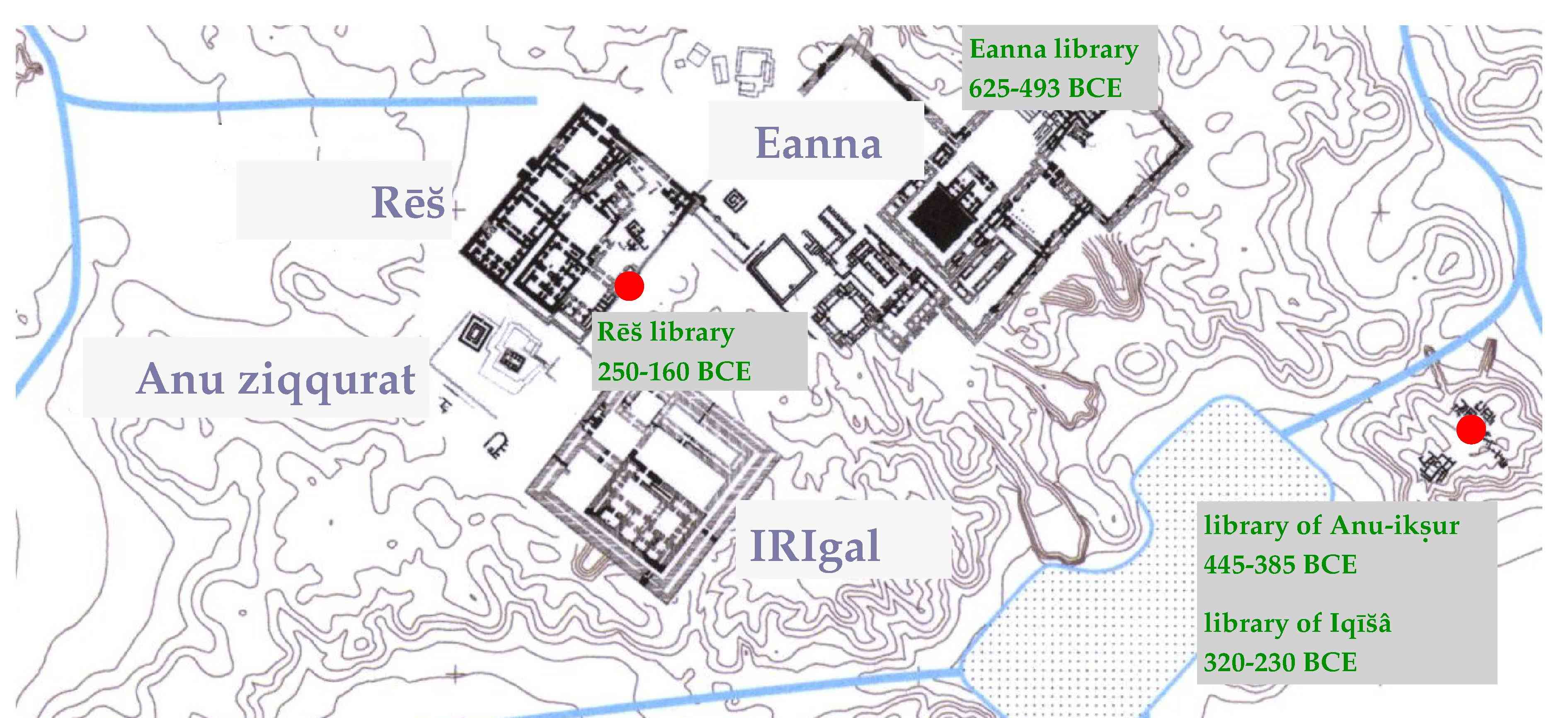This project was concerned with organisational, practical and other contextual aspects of scholarship in Babylonia, Greece, the Greco-Roman world and Egypt during the period 600 BCE – 400 AD. Scholarly communities and their relation to the temples and other institutions are investigated on the basis of textual, archival and archaeological evidence. The practical applications of astronomy, astrology, geography and medicine and the mutual relations between these scholarly disciplines are explored.
Research
Scholars and Scholarship in Late Babylonian Uruk
Scholarly libraries in Uruk during the first Millennium BCE | © Mathieu Ossendrijver
Two studies about scholarship in Late Babylonian Uruk were carried out: one dedicated to astral science, the other to mathematics. In connection with the exhibition Uruk – 5000 Jahre Megacity (25 April – 8 September 2013) at the Pergamon Museum the development and circulation of astral science in Uruk during the first Millennium BCE was investigated by tracking the scholarly networks and the cuneiform libraries in this city. In connection with the conference “Scholars and Scholarship in Late Babylonian Uruk” (SAW/CNRS, March 23-24, 2015, Université Paris Diderot) the textual evidence for scholarly mathematics at the Rēš temple in Uruk was reassessed.
Mathieu Ossendrijver, “Scholarly Mathematics in the Rēš Temple”, in: Christine Proust and John Steele (Eds.), Scholars and Scholarship in Late Babylonian Uruk, Wien / New York: Springer, 2019
Ossendrijver, in press, “Astral Science in Uruk during the First Millennium BCE: Libraries, Communities and Transfer of Knowledge”, in: M. van Ess (ed.), Uruk. Altorientalische Metropole und Kulturzentrum. 8. Internationales Colloquium der DOG
Scholars, Priests and Temples – Babylonian and Egyptian Science in Context
As a central event of research project D-1-4 the workshop “Scholars, Priests and Temples – Babylonian and Egyptian Science in Context“ brought together specialists in Late Babylonian, Late Egyptian and Greco-Roman science along with experts in the temple institutions and the social and institutional context of ancient science. Its temporal focus was on the period 600 BCE – 200 CE, roughly corresponding to the Neo Babylonian, Achaemenid, Seleucid and Parthian eras in Babylonia and the Late Egyptian, Ptolemaic and Roman eras in Egypt. During this period there were significant developments in the sciences, the role of the temples as loci of scholarship, the notion of priesthood and the practice of royal patronage. An important goal was to stimulate discussions and exchange between Assyriologists, Egyptologists and Greco-Roman scholars, not only of new results but also of methodological issues, and to address the transfer of knowledge between Babylonia and Egypt and the need for comparative studies.

